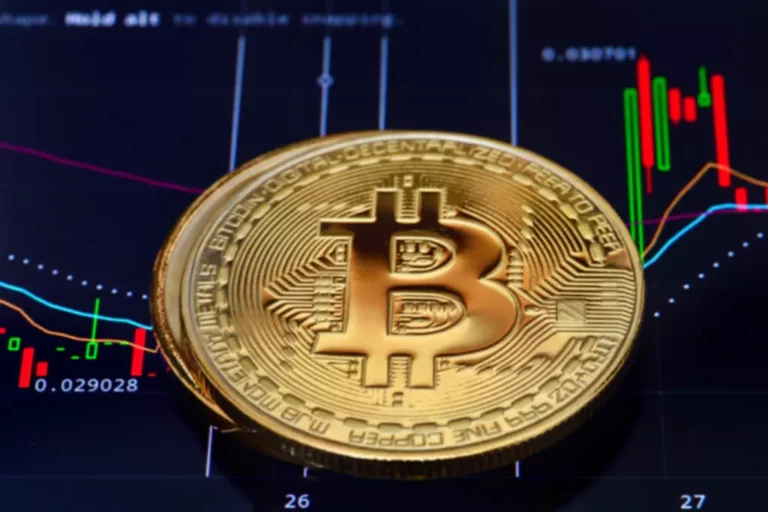Crypto Derivatives: An Ecosystem Primer
Content
Investors in the cryptocurrency market may use these derivatives to hedge against the volatility of the overall market. Many traders use these derivatives for speculative purposes, taking positions based on their expectations of whether the cryptocurrency market as a whole will go up or down. Crypto Index Derivatives offer Cryptocurrency diversification, allowing exposure to multiple cryptocurrencies simultaneously. This can be advantageous for those who want to spread their risk across different digital assets.
Crypto Derivatives Trading: Understanding the Basics for Beginners

Innovative products are continuously evolving in the crypto derivatives market, offering unique hedging and investment options. The crypto derivatives market can be bifurcated into a centralized derivatives market and a decentralized one. For centralized derivatives, non-US markets lead in trading volume, while in the US, CME is the predominant player with over 60% market share of https://www.xcritical.com/ the monthly derivative trading volume in the US as of September 2023. The decentralized derivatives market, though smaller, is gaining traction for its security and transparency, with dYdX protocol being a major player in DeFi derivatives.
Why Would I Want To Trade Cryptocurrency Derivatives?
With all of these pieces together, exploring the crypto market has never been so secure. In contrast, high liquidity attracts more market participants, facilitates efficient and transparent market development, and reduces crypto derivative trading the likelihood of market manipulation. Learn about what factors affect the price of an option in Managing Risk in Crypto Options With Greeks.

How Can You Hedge With Bitcoin Options?
This allows traders to take advantage of the high volatility of the crypto market, as it can help them earn significant profits if they correctly predict the future price movements of the underlying asset. In other words, blockchain-enabled synthetic assets have the ability to bring most or even all of what is currently offered in traditional financial markets into the crypto ecosystem in a way that enhances market efficiency and transparency. Several crypto projects have already made significant strides to accelerate this shift. Two notable examples are Synthetix, a protocol for creating global liquidity for a wide range of synthetic assets on Ethereum, and UMA, which allows users to stake essentially any cryptocurrency as collateral to create new synthetic assets.
These strategies involve borrowing funds (using leverage) to increase the size of their positions. Simultaneously taking long and short positions on correlated assets, such as Bitcoin and altcoins, traders aim to profit from relative price movements between the two assets. This strategy relies on identifying relationships between assets and capitalising on their divergences. Trading crypto derivatives epitomizes the concept of high risk with the potential for high rewards.

In a futures contract, there is an obligation to purchase at the agreed price, whereas an options contract gives the holder the choice. Principal trading desks like GSR provide the increased flexibility to service this demand, facilitating bespoke client trades bilaterally despite the absence of a listed market in many cases, such as with altcoin options. In this example, GSR would face the client directly and become the counterparty to their trade, allowing GSR clients to trade options on a broad suite of altcoins with flexibility around trade size and maturity date. It also allows for flexibility on the strike price, collateral, settlement type, exercise style, and other exotic features such as average price options, digitals, barriers, and baskets.
When the contract expires (i.e., on the set future date), the buyer is obligated to purchase and receive the asset, and the seller is obligated to sell and deliver the asset. Risk can be managed in derivatives trading through various strategies, including diversification of investments, setting stop-loss orders, hedging with different types of derivatives, and careful use of leverage. A limit order is a type of order placed with a broker to buy or sell a set amount of a financial instrument at a specified price or better. In the context of a crypto derivatives exchange, limit orders allow traders to control the price at which they trade a crypto derivative. Leverage allows traders to control a more prominent position size with less capital. For example, with 10x leverage, a trader can control $10,000 worth of cryptocurrency with just $1,000 in their account.
The insights and services we provide help to create long-term value for clients, people and society, and to build trust in the capital markets. The expiry date of a derivative contract refers to the date when the contract is settled. Technical analysis tools like moving averages are crucial in identifying and confirming trends. In this case, you sell a contract to sell Bitcoin at its current price, expecting the price to decrease.
The term ‘cryptocurrency derivative’ is an umbrella for a collection of different financial contracts that derive their value from the crypto they are based upon. A crucial characteristic of a derivative contract is that investors don’t own the underlying crypto, meaning an investor can speculate on the future value of Bitcoin, for example, without actually buying BTC and holding it in a wallet. Crypto structured products are sold across various centralized and decentralized venues today.
While the growing number of crypto-based derivatives is an exciting development which underscores the industry’s gradual maturation, these financial products generally still operate within the conventional framework set by legacy financial institutions. As a result, one of the most exciting syntheses of blockchain technology and the global derivatives market resides in blockchain’s potential to change the way the traditional derivatives market itself works. For example, a Bitcoin mining company may sell Bitcoin futures contracts to hedge its natural long position in BTC against a steep drop in the price of bitcoin. You should not construe any such information or other material as legal, tax, investment, financial, cybersecurity, or other advice.
The option’s premium is pivotal, influenced by the asset’s current market price, the strike price, time until expiration, and the asset’s volatility. It represents the cost for the right to trade the underlying asset and reflects the market’s assessment of the likelihood of the asset reaching the strike price within the given period. Options in crypto trading, therefore, offer a calculated, risk-controlled way to engage in the market, whether for protective hedging or speculative purposes. From the basic definition to the various types, including futures, options, and perpetual swaps, our guide will equip you with the essential knowledge to navigate the crypto derivatives market with confidence and proficiency.
- Perpetual swaps, or perpetual futures or contracts, are similar to traditional futures contracts but with no expiry date.
- Cryptocurrency derivatives, on the other hand, are extremely speculative and risky.
- Some binary options brokers offer leverage, allowing traders to control a more substantial position with a relatively small amount of capital.
- Accurate prediction of price movements is essential to leverage maximum gains effectively.
- When the funding rate is significantly positive or negative, traders can take positions in futures contracts to take advantage of the difference between the futures and spot prices.
- When trading futures, traders can go long (benefiting on price increase) or short (benefiting on price decrease) using these contracts.
Binance is the market leader, commanding a ~60% share of the centralized perps market, while OKX and Bybit follow at ~16% and ~12%, respectively. Together, these three exchanges comprise nearly 90% of the $2 to $3 trillion of perp volume that regularly trades each month. Derivatives trading also enables leverage, allowing traders to control larger positions with a smaller amount of capital — hence magnifying the potential gains. Additionally, derivatives facilitate portfolio diversification, meaning traders can maximize their returns and manage risks more effectively. Trading derivatives across various assets can reduce individual market risks and achieve a more balanced portfolio. In today’s financial and crypto markets, physical delivery of the asset does not always occur with futures contracts.
This flexibility attracts traders seeking to capitalise on short-term price fluctuations in the cryptocurrency market. Crypto derivatives, whose value is derived from an underlying cryptocurrency asset, offer several advantages to cryptocurrency market traders and investors. Futures trading involves agreements to buy or sell an asset, like Bitcoin or Ethereum, at a predetermined price on a specified future date. It’s like making a promise to buy or sell crypto at a set price in the future, regardless of the actual market price.
Crypto derivatives such as Bitcoin futures can be game-changers for experienced traders, but they come with risks. This is a complex field, so take your time, research, and only invest what you can afford to lose. For instance, a Bitcoin miner may use futures contracts to lock in a future selling price, ensuring they can cover operational costs even if Bitcoin’s price drops. Traders identify critical support and resistance levels and enter positions when Bitcoin’s price breaks through these levels. Breakout traders aim to ride the market’s momentum by capitalising on significant price movements.
After conducting thorough research and analyzing market sentiment, FuturCoin has significant potential for future growth. Crypto derivatives enable investors to diversify their investment strategies beyond buying and holding cryptocurrencies. Automated trading programs execute trades based on predefined algorithms and criteria. These algorithms analyse market data and execute trades rapidly, allowing for rapid decision-making and execution. Algorithmic trading strategies range from simple rules-based systems to complex machine-learning algorithms.
